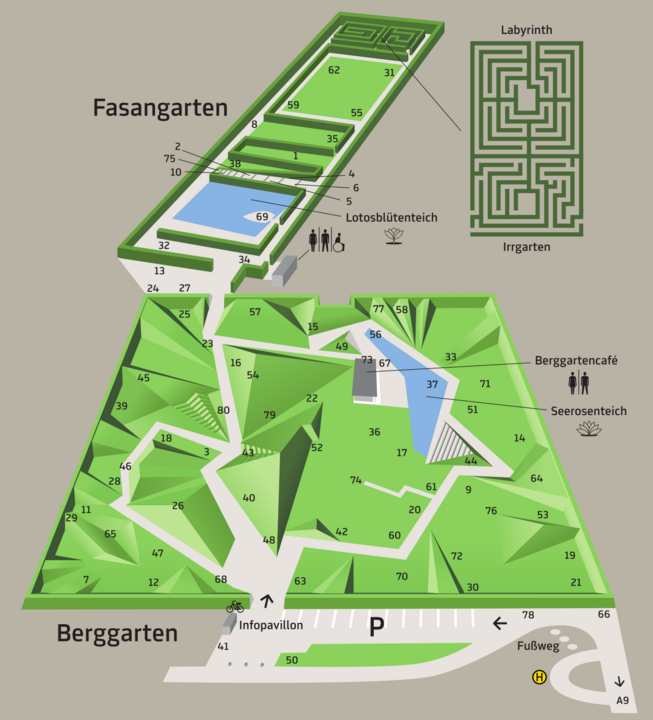Sculptures
Temporary Sculptures
![[Translate to English:] Für die Vögel [Translate to English:] Ein verkehrter Globus hängt an einem Ast.](/fileadmin/_processed_/8/c/csm_Klasse_Schabus_Fuer_die_Voegel_2024_Foto_e18aec93f4.jpg)
Für die Vögel [For the birds]
class of Hans Schabus; with Claudia Märzendorfer, Artists in Residence 2024
Austrian Sculpture Park
Presentation at the Spring Celebration on 26 May 2024
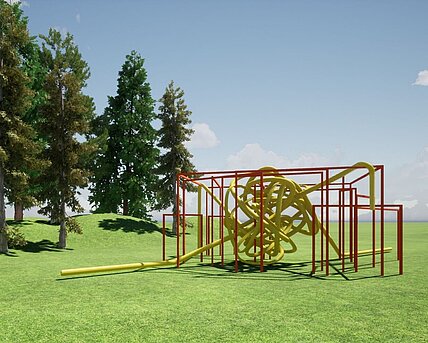
In Then Out, Version 2024
class of Anke Strittmatter, FH JOANNEUM
Austrian Sculpture Park
Presentation at the Spring Celebration on 26 May 2024
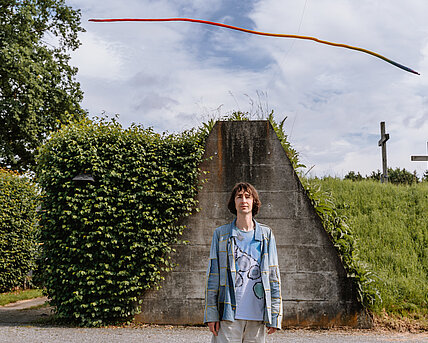
1 World 1 Painting
Peter Piek
Austrian Sculpture Park
Since May 26, 2024
Permanent Sculptures
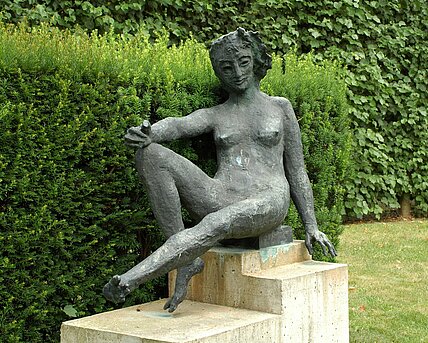
1. Atlantis
Herbert Boeckl, 1940–1944
Location: Pheasant Garden
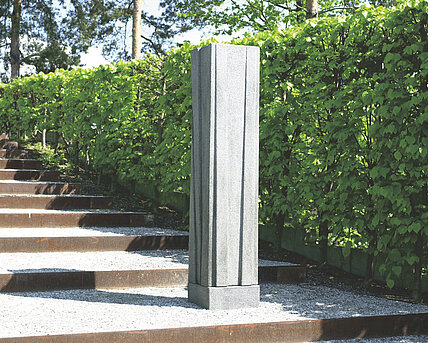
2. Figur II
Hans Aeschbacher, 1955
Location: Pheasant Garden
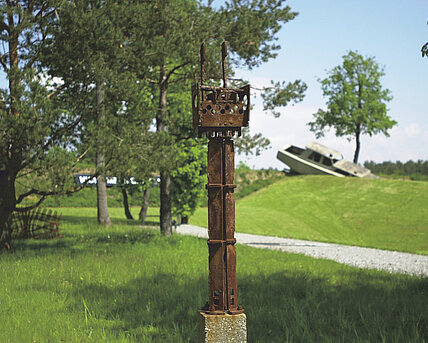
3. Skulptur
Gerhardt Moswitzer, 1961
Location: Alpine Garden
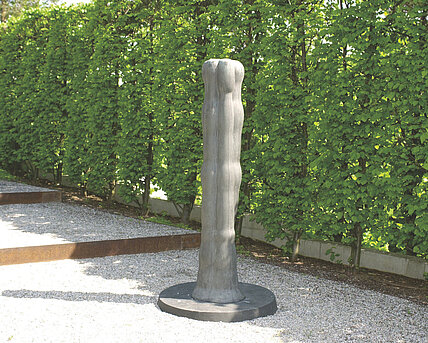
4. Figur III
Joannis Avramidis, 1963
Location: Pheasant Garden
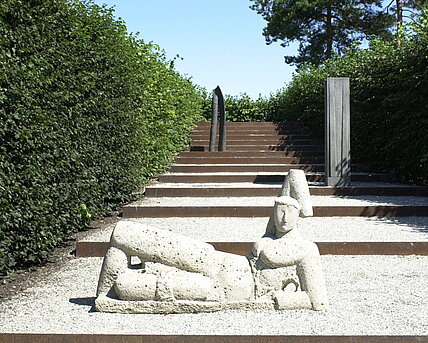
5. Die große Ruhende [Large Dormant]
Heinz Leinfellner, 1964/65
Location: Pheasant Garden
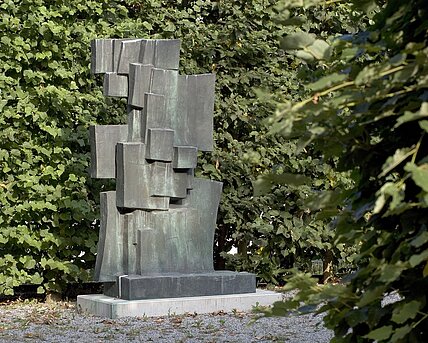
6. Große Figur für Luzern [Large figure for Lucerne]
Fritz Wotruba, 1966/67
Location: Pheasant Garden
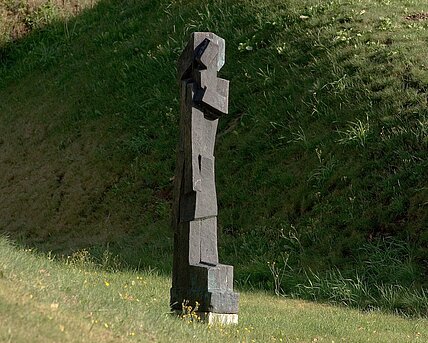
7. Hammurabi
Josef Pillhofer, 1970
Location: Alpine Garden
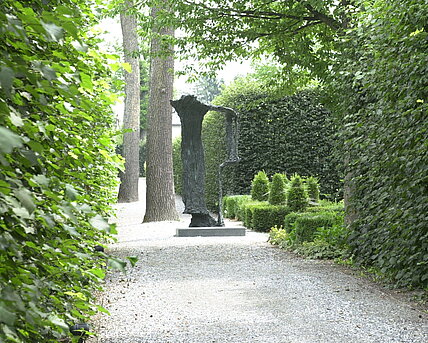
8. Charioteer
Bryan Hunt, 1982
Location: Pheasant Garden
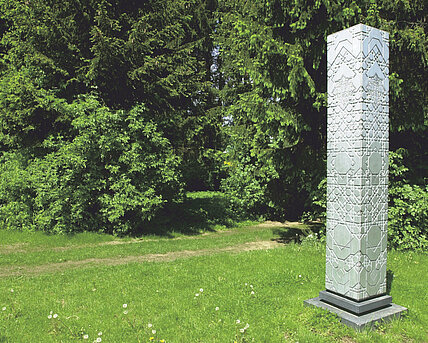
9. Senkrechter Auszug aus der Urzelle
Fritz Hartlauer, 1982/84
Location: Alpine Garden
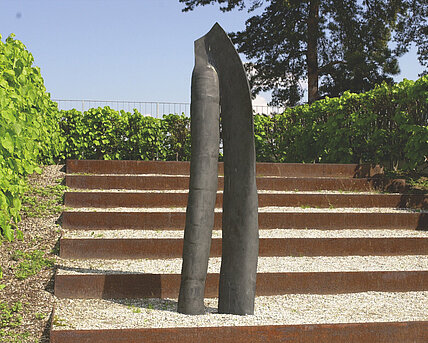
10. Zukommender [Approaching Figure]
Marianne Maderna, 1984
Location: Pheasant Garden
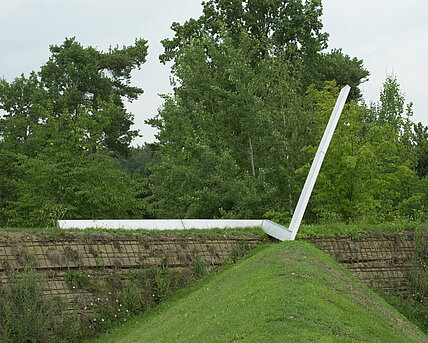
11. Jetzt [Now]
Oskar Höfinger, 1986
Location: Alpine Garden
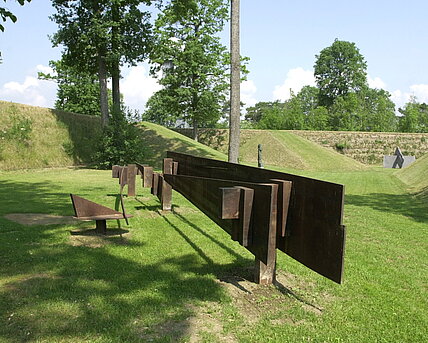
12. Natalexos
Tony Long, 1987
Location: Alpine Garden
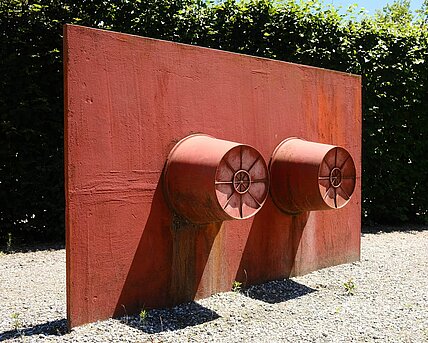
13. Bunker
Erwin Wurm, 1987
Location: Pheasant Garden
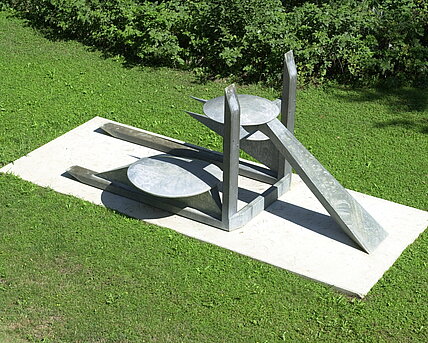
14. Figur mit eingeschlossenen Steinstücken [Figure with enclosed stone elements]
Christoph Lissy, 1988
Location: Alpine Garden
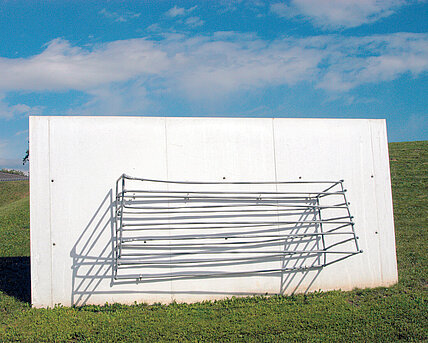
15. Korb [Basket]
Oswald Oberhuber, 1989
Location: Alpine Garden
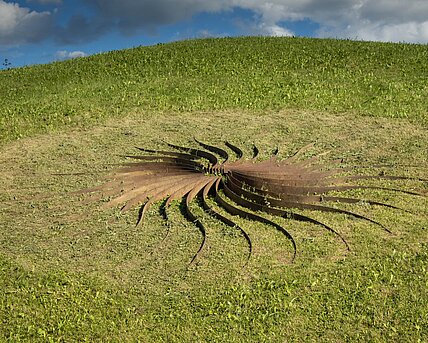
16. Sole d'acciaio
Ilija Šoškić, 1989
Location: Alpine Garden
![Ingeborg Strobl, Untitled, 1989/90 Two gravestones made of smooth stone. The inscription on the first: "Be patient". The inscription on the second: "With your own shadow" [inscriptions are translated from German].](/fileadmin/_processed_/d/e/csm_Strobl_Sei_geduldig_1989_90_Foto_UMJ_Gspandl-Pataki_02_53b97dff74.jpg)
17. Untitled
Ingeborg Strobl, 1989/90
Location: Alpine Garden
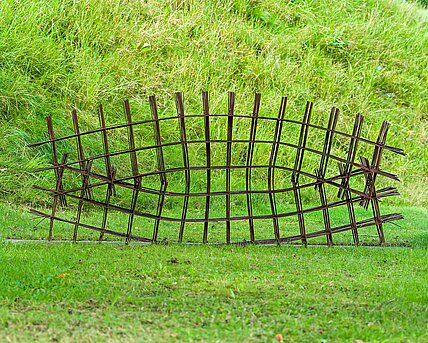
18. Untitled
Carmen Perrin, 1990
Location: Alpine Garden
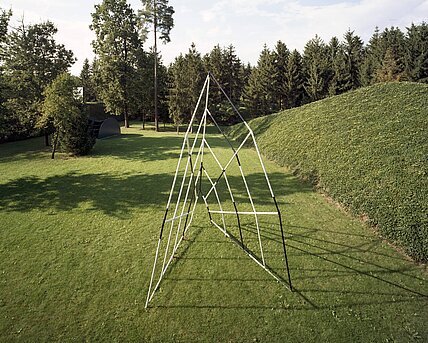
19. Open
Tom Carr, 1991
Location: Alpine Garden
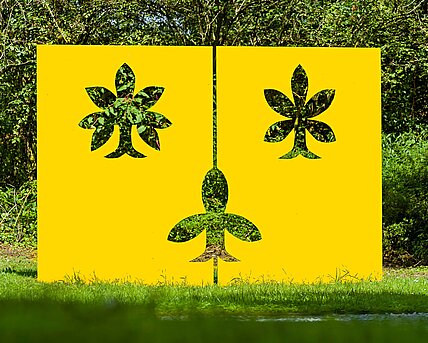
20. Phyllologia
Christa Sommerer, 1991
Location: Alpine Garden
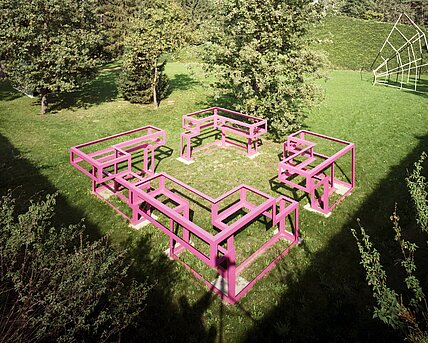
21. Untitled
Franz Pichler, 1991/92
Location: Alpine Garden
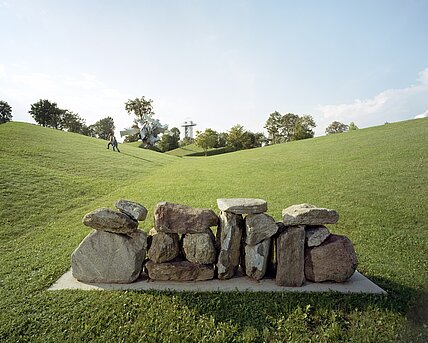
22. Mauer
Lois Weinberger, 1992
Location: Alpine Garden
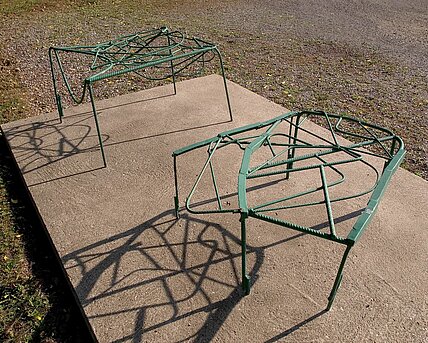
23. Who is Who
Franz West/Otto Zitko, 1992
Location: Alpine Garden
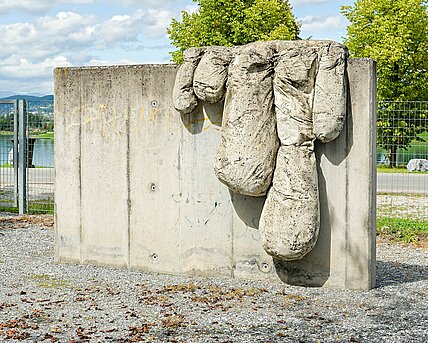
24. Wand [Stonewall]
Erwin Bohatsch, 1992
Location: Pheasant Garden
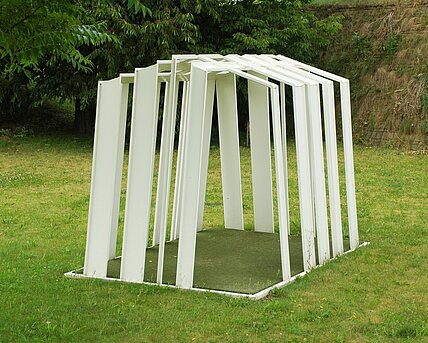
25. The Silent Cell
Manfred Erjautz, 1992/94
Location: Alpine Garden
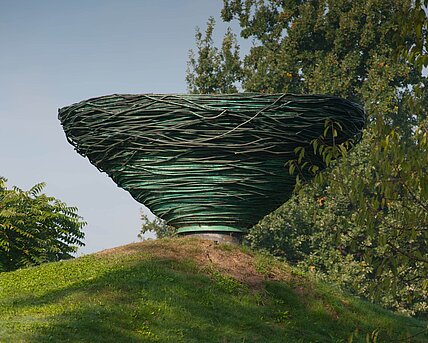
26. Untitled
Michael Kienzer, 1992/94
Location: Alpine Garden
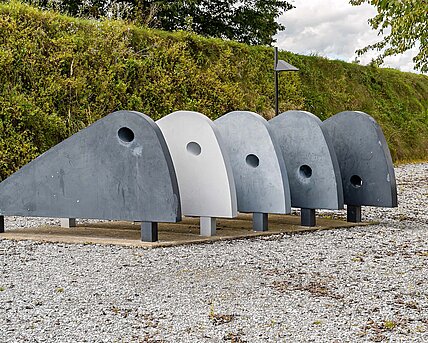
27. Perambulator
Karin Hazelwander, 1993
Location: Pheasant Garden
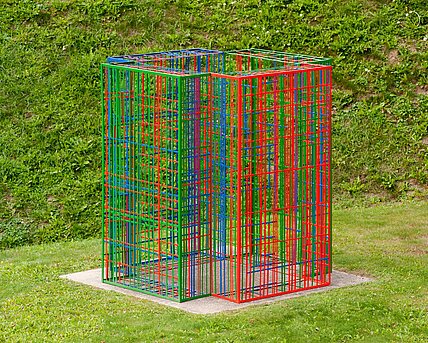
28. Untitled
Sabina Hörtner, 1993
Location: Alpine Garden
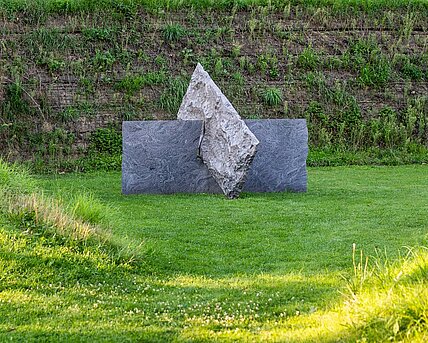
29. Fu mit dem schönen Mandarin
Franz Xaver Ölzant, 1993
Location: Alpine Garden
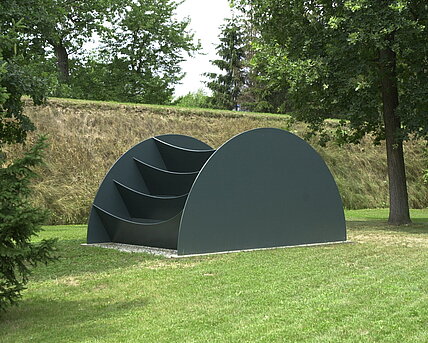
30. Körperteil-Hürden [Body part hurdles]
Richard Fleissner, 1994
Location: Alpine Garden
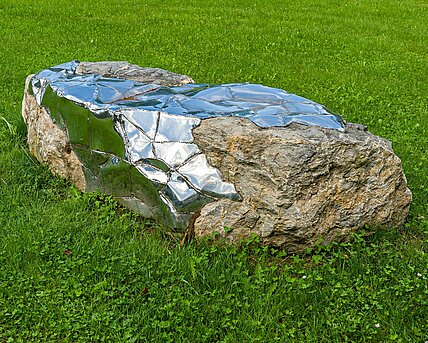
31. Teilummantelung Partial coating]
Othmar Krenn, 1995
Location: Pheasant Garden
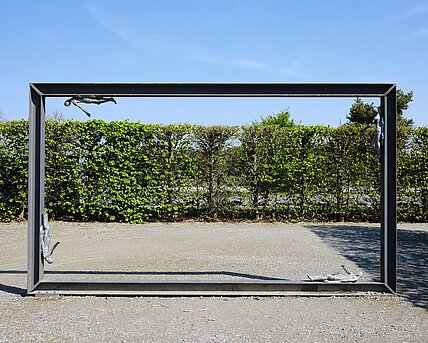
32. Untitled
Martin Schnur, 1995
Location: Pheasant Garden
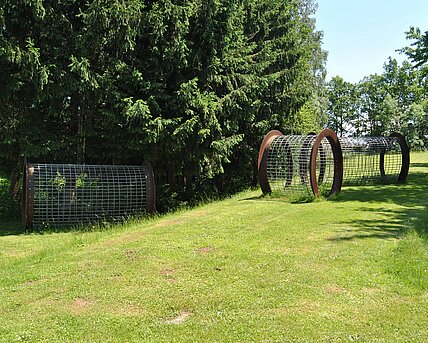
33. Ajuste en el Vacio
Susana Solano, 1995/1996
Location: Alpine Garden
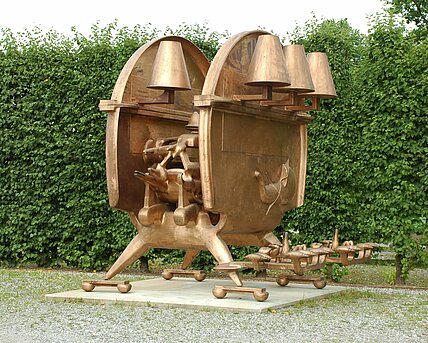
34. Untitled
Bruno Gironcoli, 1995/96
Location: Pheasant Garden
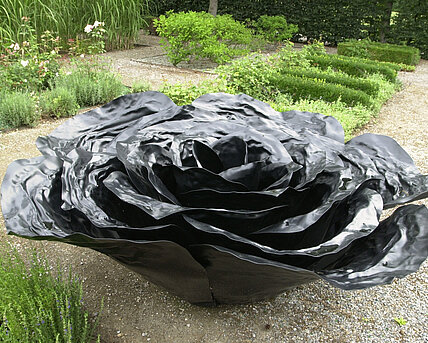
35. Rose
Rudi Molacek, 1999
Location: Pheasant Garden
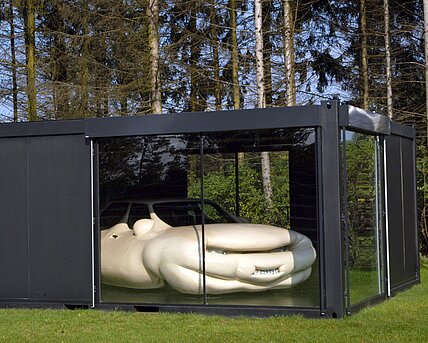
36. Fat Car
Erwin Wurm, 2000/2001
Location: Alpine Garden
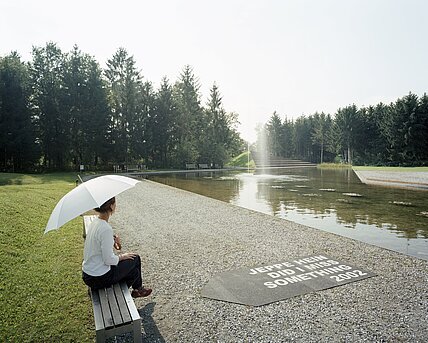
37. Did I miss something, Exemplar 1/3
Jeppe Hein, 2002
Location: Alpine Garden
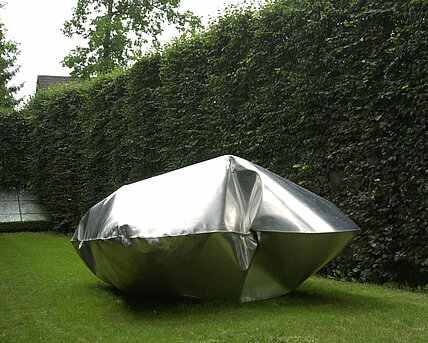
38. Gonflable 6
Hans Kupelwieser, 2002
Location: Pheasant Garden
![Heinz Gappmayr, NOT YET VISIBLE - NO LONGER VISIBLE, 2003 White lettering on a black background inside the wall of the sculpture park with the inscription "Nicht mehr sichtbar" [no longer visible]. On the other side of the wall on the grounds of the Schwarzl leisure center is the counterpart with the inscription "Noch nicht sichtbar" [not yet visible].](/fileadmin/_processed_/e/a/csm_Gappmayr_sichtbar_2003_Foto_Markus_Enzinger_f9915b2af8.jpg)
NOCH NICHT SICHTBAR – NICHT MEHR SICHTBAR [NOT YET VISIBLE – NO LONGER VISIBLE]
Heinz Gappmayr, 2003
Location: Alpine Garden
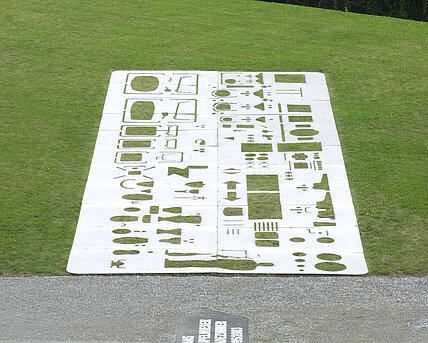
40. Bathroom
Hans Kupelwieser, 1995/2003
Location: Alpine Garden
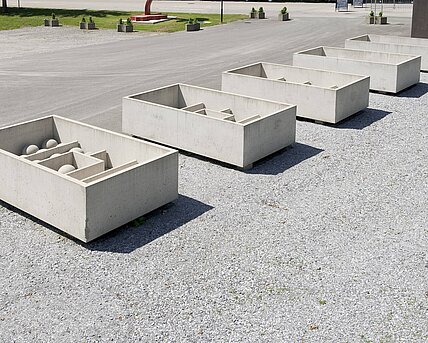
41. Untitled
Matt Mullican, 2003
Location: car park
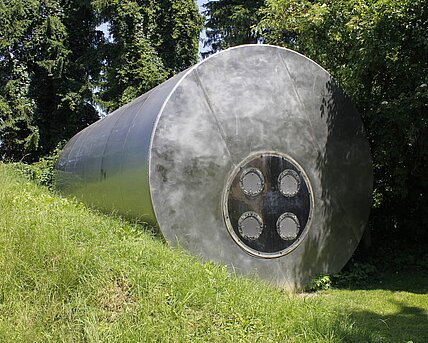
42. SUB/DC
Michael Pinter, 2003
Location: Alpine Garden
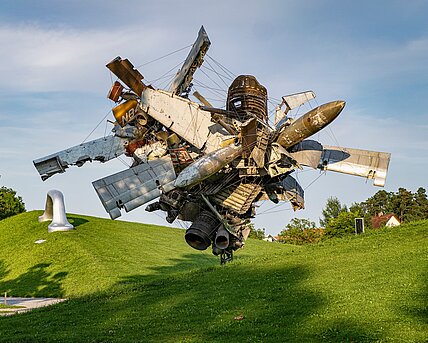
43. Airplane Parts & Hills
Nancy Rubins, 2003
Location: Alpine Garden
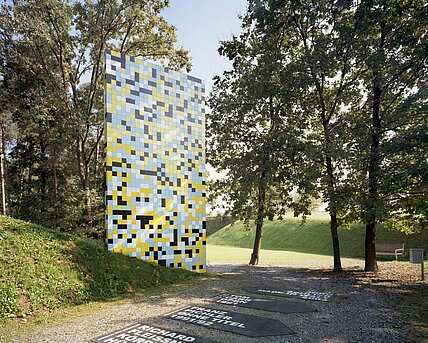
44. Made in Italy
Jörg Schlick, 2003
Location: Alpine Garden

45. Concrete boat
Michael Schuster, 2003
Location: Alpine Garden
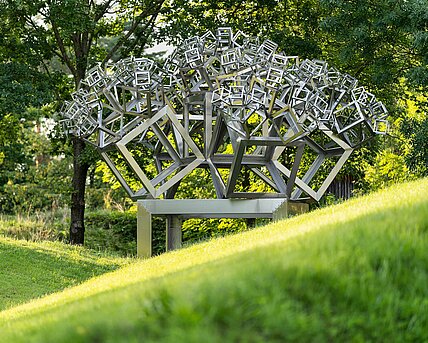
46. 3D Fraktal 03/H/dd
Hartmut Skerbisch, 2003
Location: Alpine Garden
![Thomas Stimm, Terranian Platform, 2003 The sculpture is a platform with the inscription "TERRA MY TERRA/PLANET SO SWEET/I CAN FEEL YOU/UNDER MY FEET". [inscriptions translated from german]](/fileadmin/_processed_/e/6/csm_Stimm_Terranian_Platform_2003_Foto_Michael_Schuster_3f8e16165c.jpg)
47. Terranian Platform
Thomas Stimm, 2003
Location: Alpine Garden
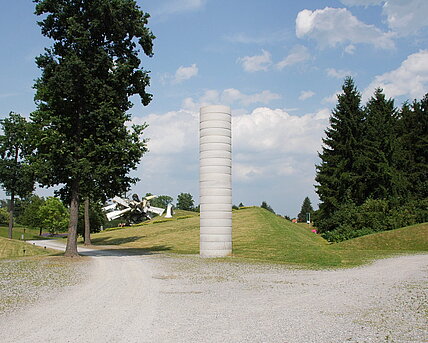
48. Untitled
Heimo Zobernig, 2003
Location: Alpine Garden
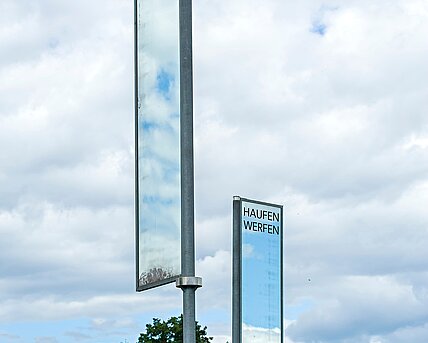
49. Zog den Helfer unterm Teppich hervor [Pulled forth the helper from under the carpet]
Tobias Pils, 2004
Location: Alpine Garden
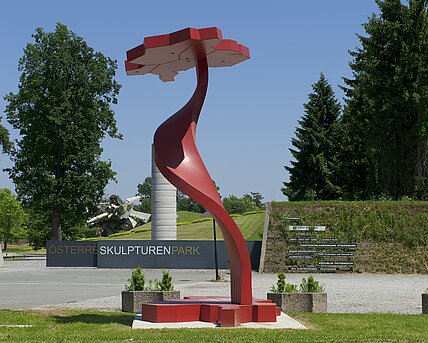
50. EU & YOU, Objekt anlässlich der Erweiterung der Europäischen Union 2004
Boris Podrecca, 2004
Location: car park
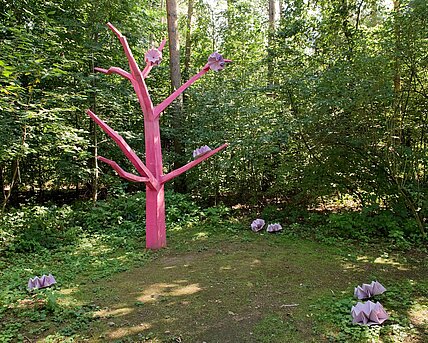
51. Asoziale Tochter [Anti-social daughter]
Tobias Rehberger, 2004
Location: Alpine Garden
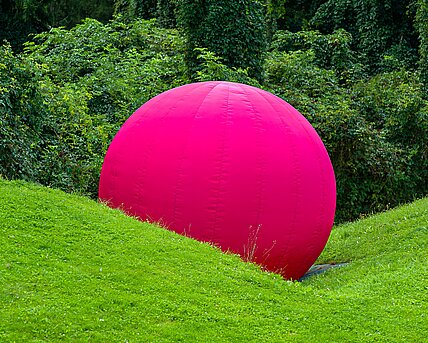
52. gesture
Werner Reiterer, 2003/04
Location: Alpine Garden
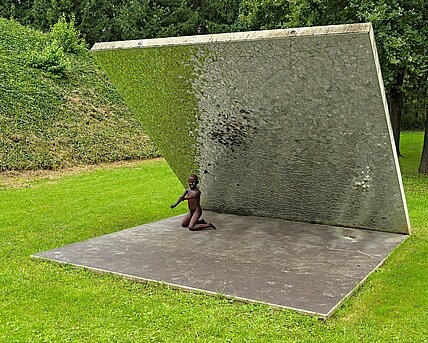
53. Materialprobe: Sieg über die Sonne, Kunst sich über die Natur lustig zu machen
Gustav Troger, 2004
Location: Alpine Garden
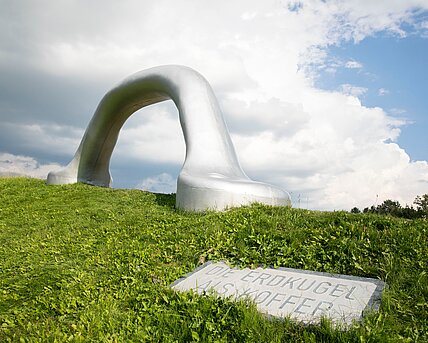
54. Die Erdkugel als Koffer
Peter Weibel, 2004
Location: Alpine Garden
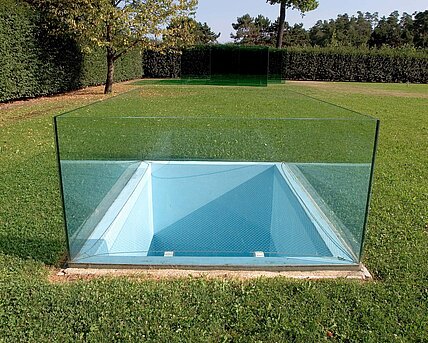
55. -3m Brett [-3 meter board]
Markus Wilfling, 2004
Location: Pheasant Garden
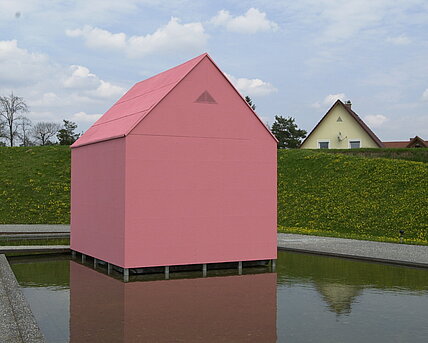
56. watermusic
Eva & Adele, 2003/04
Location: Alpine Garden
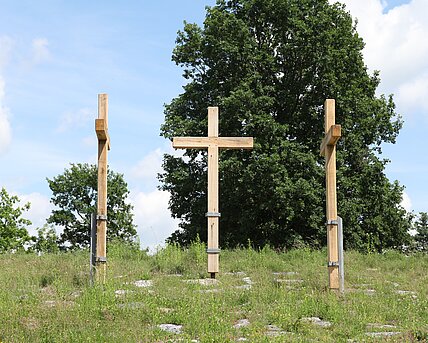
57. Painting to Hammer a Nail In / Cross Version
Yoko Ono, 2005 (1990, 1999, 2000)
Location: Alpine Garden
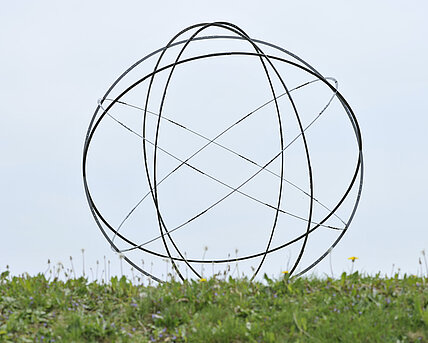
58. Sphäre 315 [Sphere 315]
Hartmut Skerbisch, 2005
Location: Alpine Garden
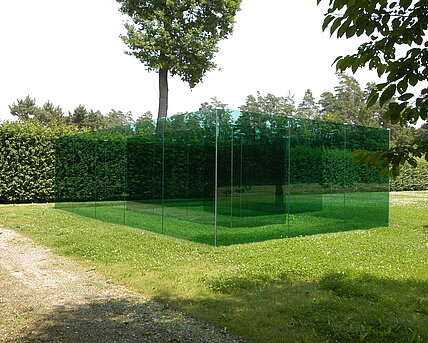
59. Labyrinth
Matta Wagnest, 2005
Location: Pheasant Garden
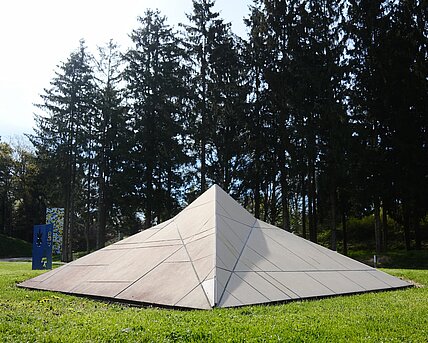
60. Tiger Stealth
Peter Sandbichler, 2009
Location: Alpine Garden
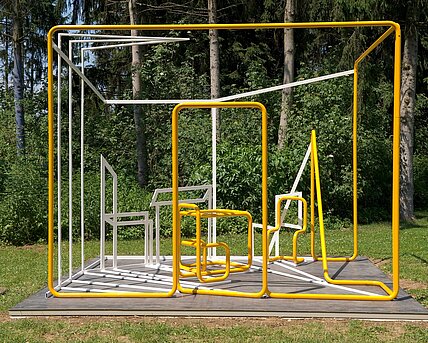
61. Unità Cellulare
Giuseppe Uncini, 1967/2008
Location: Alpine Garden
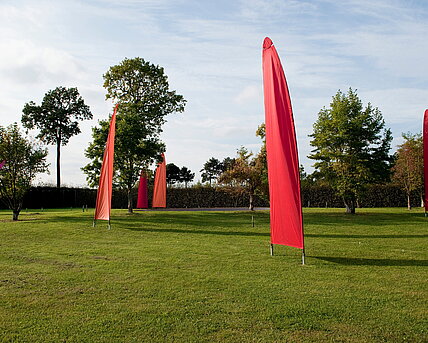
62. Siamese Shadow
Martin Walde, 2003 (work in progress) 2008
Location: Pheasant Garden (currently not on display)
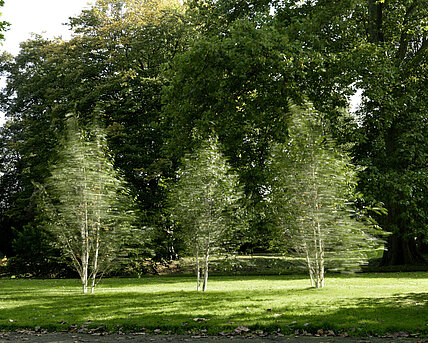
63. Tanzende Bäume [Dancing Trees]
Timm Ulrichs, 1997/2010
Location: Alpine Garden
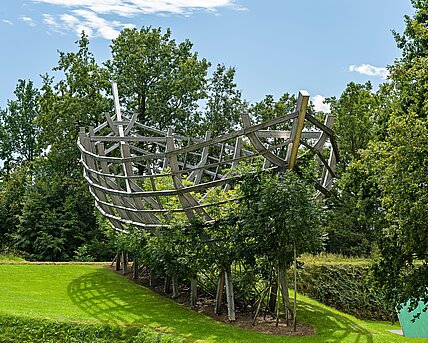
64. Arche aus lebenden Bäumen [Ark made of living trees]
Mario Terzic, 1998/2010-2011
Location: Alpine Garden
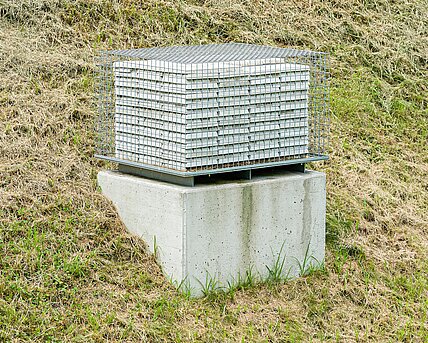
65. Wertverschiebung [Shift of Value]
Wolfgang Becksteiner, 2010
Location: Alpine Garden

66. Das Goldene Kalb [The golden Calf]
Hans Hollein, 2011
Location: driveway (Thalerhofstraße)
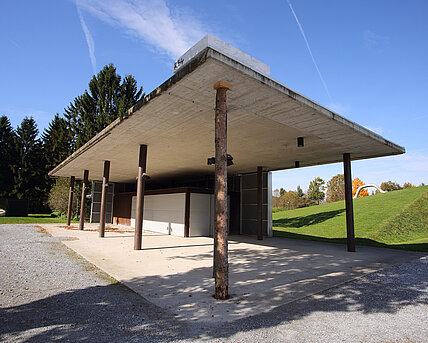
67. Untitled
Mandla Reuter, 2013
Location: Berggartencafé
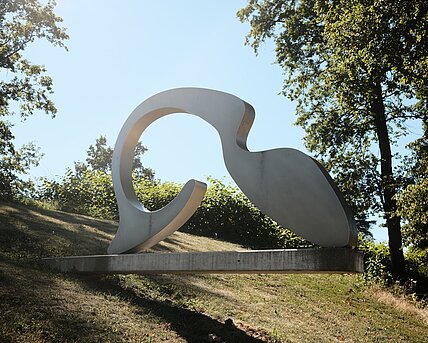
68. Placement (Giardini)
Manfred Wakolbinger, 2012
Location: Alpine Garden
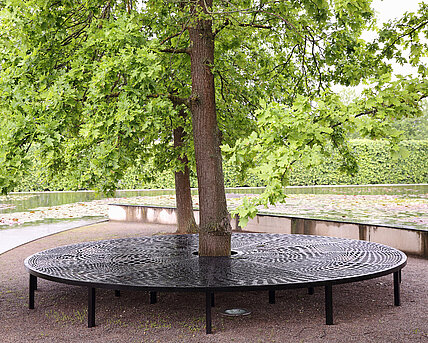
69. Ohne Titel
Peter Kogler, 2014
Location: Pheasant Garden
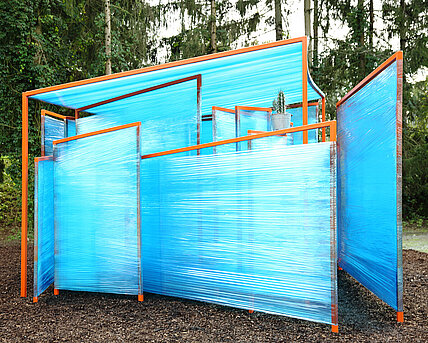
70. In Then Out
Klasse Tobias Rehberger, Städelschule Frankfurt, Artist in Residence 2014,
Location: Alpine Garden
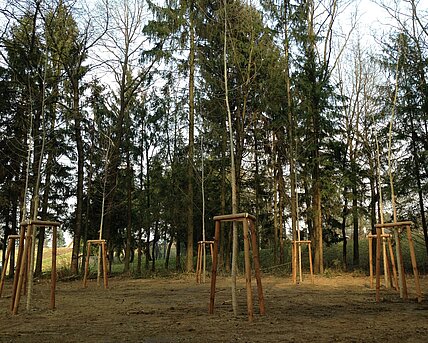
71. Espenkuppel [Aspen Dome]
Bernhard Leitner, 2015
Location: Alpine Garden
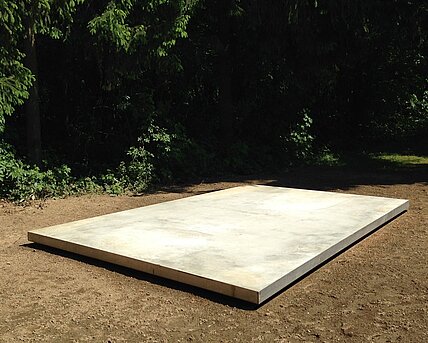
72. Untitled (Project space/Platform)
Eric Kläring/Heimo Zobernig, 2013/2016
Location: Alpine Garden
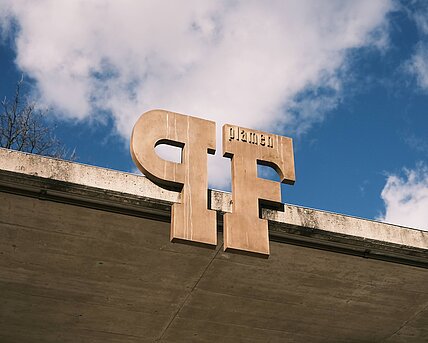
73. Pour féliciter, pour féliciter, pour féliciter, plamen
Plamen Dejanoff, 2015
Location: Berggartencafé

74. Fat House
Erwin Wurm, 2003
Location: Alpine Garden
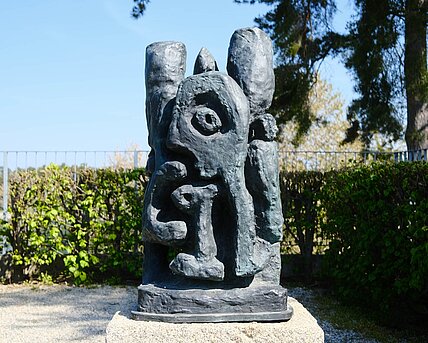
75. DichteDichter II
Gunter Damisch, 1991/2013
Location: Pheasant Garden
![Martin Gostner, Apparat für Park [Apparatus for park], 1991/2019 The work consists of oversized white cones made of absorbent cotton hanging high in the branches.](/fileadmin/_processed_/8/9/csm_Gostner_Apparat_199_2019_Foto_Martin_Gostner_646ca50b7b.jpg)
76. Apparat für Park [Apparatus for Park]
Martin Gostner, 1991/2019
Location: Alpine Garden
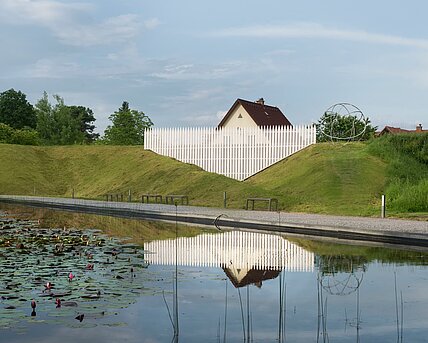
77. Unser Gartenzaun [Our Garden Fence]
Suchart Wannaset, 2018
Location: Alpine Garden
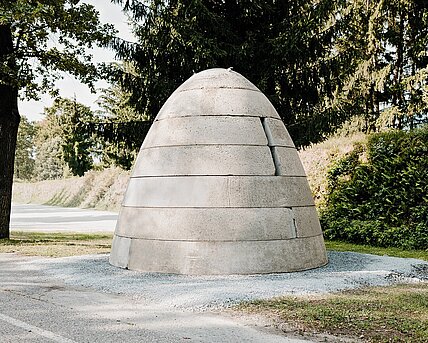
78. Bienenstock Bunker [Beehive Bunker]
Chris Burden, 2003
Location: car park
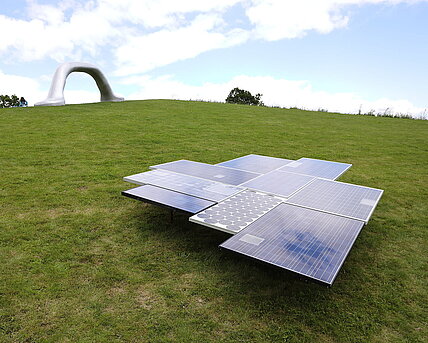
79. sunset
Judith Fegerl, 2021
Location: Alpine Garden
![Christoph Weber, sechs komma vier [six point four], 2021 Six concrete stones in a row, modeled on the original limestone. Next to it, at the same distance, a 0.4-fold version of one of the stones.](/fileadmin/_processed_/3/9/csm_Christoph_Weber_sechskommavier_2021_Foto_Christoph_Weber_01_904f697605.jpg)
80. sechs komma vier [six point four]
Christoph Weber, 2021
Location: Alpine Garden
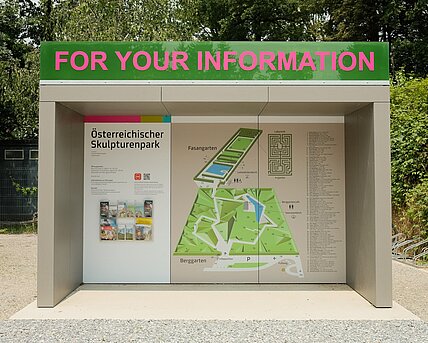
81. FOR YOUR INFORMATION
Michael Schuster, 2008/2024
Location: car park/entrance




















